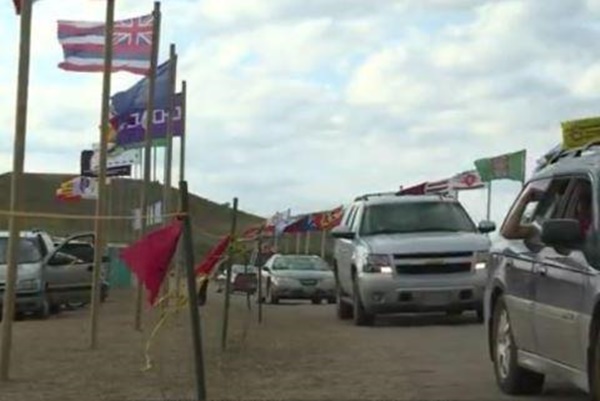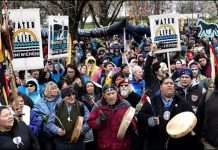
MORTON COUNTY, N.D., Sept. 4 (UPI) — Hundreds of people protesting the Dakota Access oil pipeline turned violent, the Morton County Sheriff’s Department said.
About 500 to 800 people traveled to the construction site around 2:30 p.m. Saturday and broke down a fence to get in, the department said. They stampeded the site with horses, dogs and vehicles, according to the authorities.
Police said several people were assaulted with fence posts and flag poles, including private security officers hired by Dakota Access pipeline. One person was transported to a Bismarck hospital with injuries.
Three formal injury reports were taken, and two security dogs had to be taken to the vet.
Law enforcement from Morton County, Burleigh County and Highway Patrol responded. The protesters left without further incident.
“Any suggestion that today’s event was a peaceful protest is false,” said Morton County Sheriff Kyle Kirchmeier. “This was more like a riot than a protest. Individuals crossed onto private property and accosted private security officers with wooden posts and flag poles. The aggression and violence displayed here today is unlawful and should not be repeated.”
He said while no arrests were made at the scene, the department, in cooperation with the Bureau of Criminal Investigation, is investigating the incident. No tear gas or canine units were used to remove the activists, the Morton County authorities said.
The protesters marched from property on U.S. Army Corps of Engineers land to the private property on the west side of Highway 1806. The march blocked traffic on the highway.
Native Americans are protesting a 1,100-mile, $3.8 billion four-state oil pipeline. The protest began Aug. 10 when ground was broken near the reservation. Pipeline opponents say it could disturb sacred sites and impact drinking water for 8,000 tribal members and millions further downstream.






